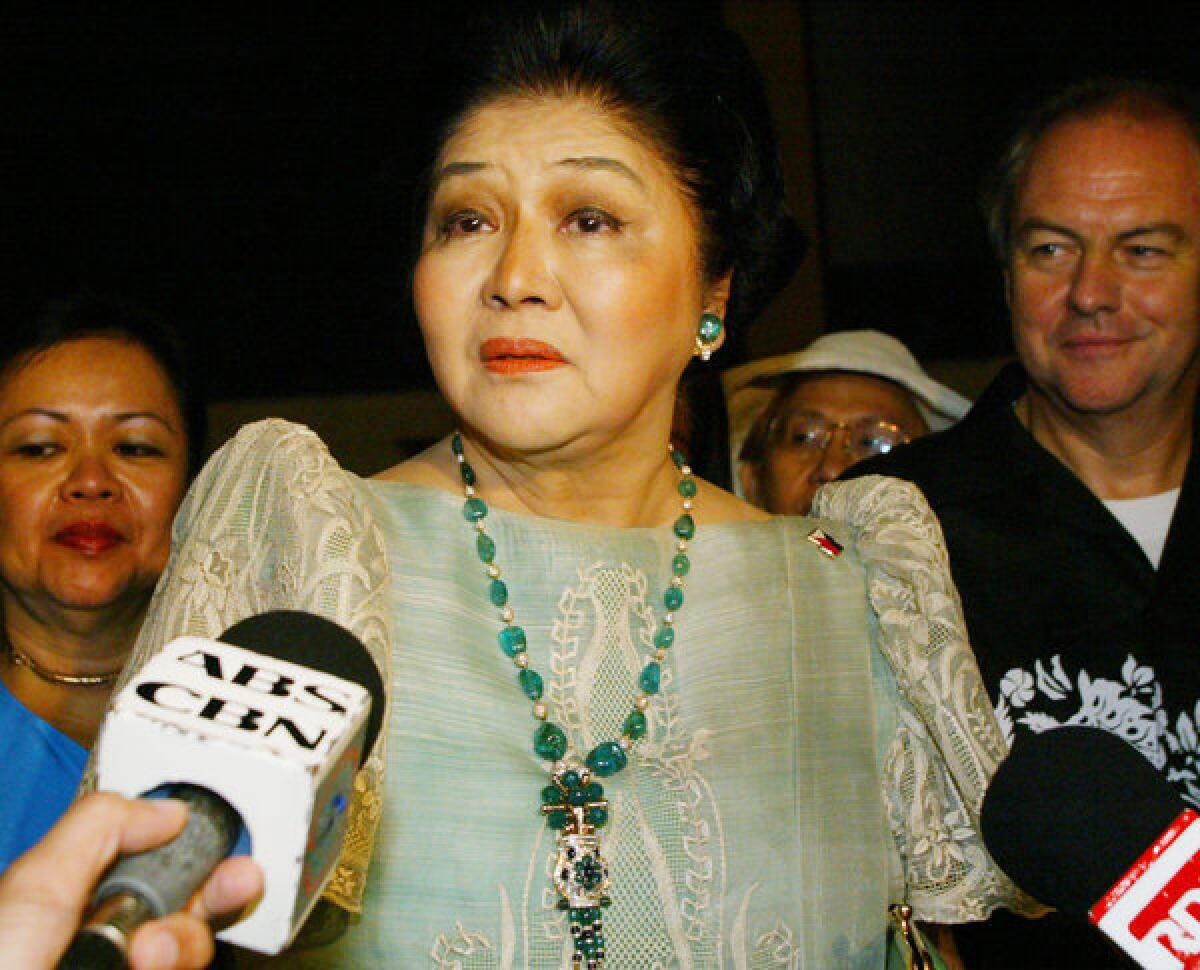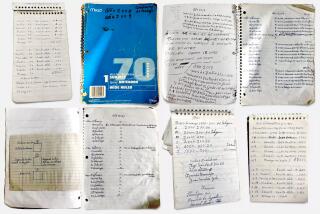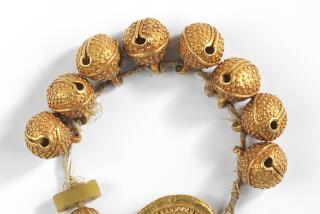Philippines may end hunt for treasures looted by Marcos

The late Philippine strongman Ferdinand Marcos so skillfully squirreled away billions in national wealth that, even 26 years after his ouster, those pursuing recovery of the ill-gotten bounty have little inkling of its true value.
There may be more than $60 billion salted away in offshore accounts or secret jungle hideouts. Stories have circulated for decades, some documented in court proceedings, of Marcos seizing a 2,000-pound golden Buddha from a treasure hunter in 1971 and hiding away other priceless spoils of the Japanese Imperial Armyâs World War II sacking of Southeast Asia.
More modest assessments put the departed dictatorâs purloined wealth in the $10-billion range, less than half of which has been located since his 1986 flight to exile in Hawaii, where he died three years later.
Whatever the extent of the missing treasure, the Philippine government appears ready to throw in the towel on efforts to find it. Lawmakers across the political spectrum this week proposed disbanding the Presidential Commission on Good Government, the asset-recovery program launched in 1987. Todayâs leadership has concluded that it costs more to maintain the hunt than the prospects for further asset seizures would justify.
The emerging consensus on disbanding the commission has prompted accusations by victims of Marcosâ human rights abuses of political impotence, corruption and capitulation to the resurgent power of the late dictatorâs relatives and cronies. Imelda Marcos, the flamboyant widow of designer shoe-stockpiling fame, is now the elected legislator for Ilocos Norte, the family stronghold, and daughter Imee is governor of the region. Ferdinand Marcos Jr., known in his late fatherâs circles as Bongbong, is a senator said to be eying a run for the presidency in 2016.
Political resurrection of the disgraced first family and Marcos business allies has led those pursuing missing national assets to conclude that their efforts are now futile, the Philippine Daily Inquirer reported Wednesday.
âAs in any âcatch-me-if-you-canâ situation, the longer you take to get your target, the lesser the opportunity becomes as the quarry manages to dig deeper,â the newspaper said, quoting Sen. Panfilo Lacson, an ally of President Benigno Aquino III.
Legal battles continue in the United States and the Philippines over recovered funds that courts have said should be divided among thousands of victims of the Marcos regime, which imposed martial law in 1972 and arrested, tortured, killed or âdisappearedâ its opponents.
âWe cannot just forgive and forget what the Marcoses did to us,â said Marie Hilao-Enriquez, head of the victimsâ association known by its Tagalog acronym SELDA. She urged a more determined pursuit of justice and financial recovery by Aquino, namesake son of the political opposition figure whose 1983 assassination ignited the popular revolt against Marcos.
A U.S. federal judge awarded the victims $2 billion in 1996, but the Marcos assets recovered so far remain tied up in escrow pending resolution of disputes over who should control them: The Philippine government, the national bank, investment companies, Marcos heirs and the torture victims have all laid claims to the money.
The only payout to 9,539 victims identified in the 16-year-old class action judgment occurred just last year and involved all of $10 million, said Sherry Broder, a Honolulu attorney who has been pursuing compensation for Marcos victims for more than two decades.
Broder concedes that tracking down the expatriated treasure is difficult but worth the effort.
âThey were experts at secreting their assets out of the country and using offshore corporations and tax havens to hide the assets,â Broder said of the Marcos family.
Still, she points to the recent discovery of artwork stashed in New York City by Imelda Marcos as cause for hope. The U.S. government has filed suit against a former secretary to the first lady, Vilma Bautista, alleging tax fraud in her attempts to sell three late 19th century masterpieces, including one of Impressionist Claude Monetâs water lily series.
Last year was the most successful for the Philippine commission in recovering Marcos assets, the Manila Bulletin said in its annual accounting last week. Some $1.2 billion was turned over to government coffers, boosting the total over more than a quarter of a century to more than $4 billion, the newspaper said, attributing the figures to Commission Chairman Andres Bautista.
Philippines analysts like Jerry Finin, a senior fellow at the East-West Center in Hawaii, expressed perplexity at the governmentâs apparent plans to shutter the commission when much remains to be repatriated.
âI donât know if itâs a lack of political will or if they feel there are other individuals in government who can do the job more effectively,â Finin said, noting that the Justice Department would be assigned to take over pending legal cases if the commission folds its tent.
Finin said he found it âironicâ that the current president seems to have acquiesced to shutting down a mission begun by his mother in pursuit of justice and accountability for crimes by a regime widely believed to have orchestrated the killing of his father.
âIt sends a very bad signal,â Finin said, ânot only to people in the Philippines but to populations under authoritarian regimes around the world, that there are very limited consequences for their actions.â
ALSO:
Argentinaâs president demands Britain return Falklands
Indian prosecutors will seek death penalty in gang-rape case
In crime-toughened Mexico City, cash-for-weapons exchange extended
A foreign correspondent for 25 years, Carol J. Williams traveled to and reported from more than 80 countries in Europe, Asia, the Middle East and Latin America.
More to Read
Sign up for Essential California
The most important California stories and recommendations in your inbox every morning.
You may occasionally receive promotional content from the Los Angeles Times.











